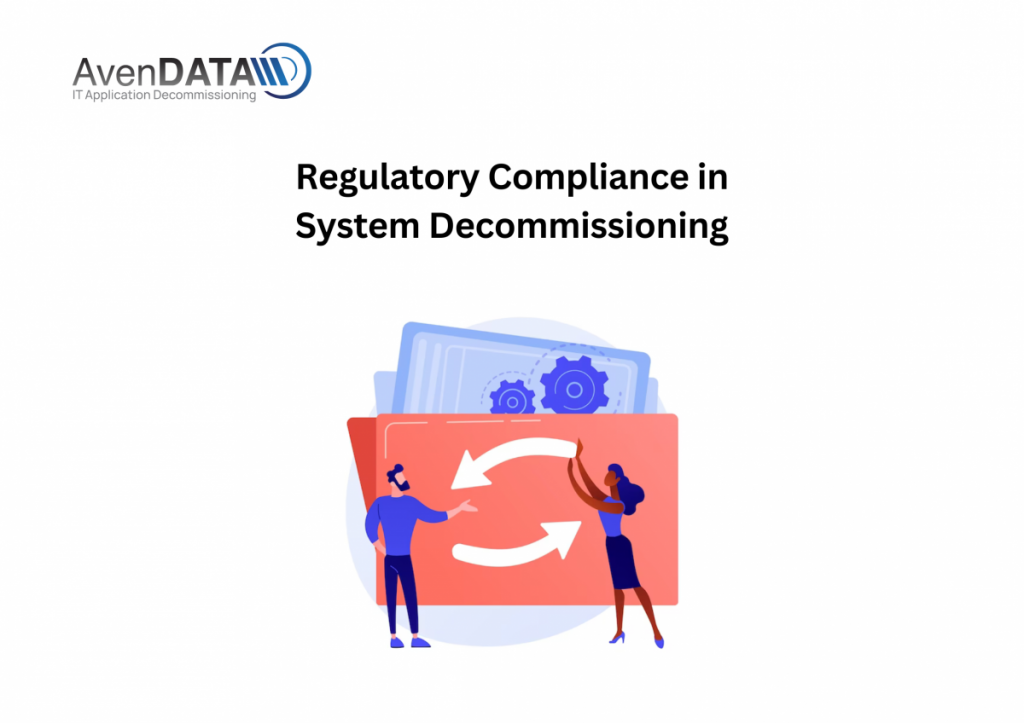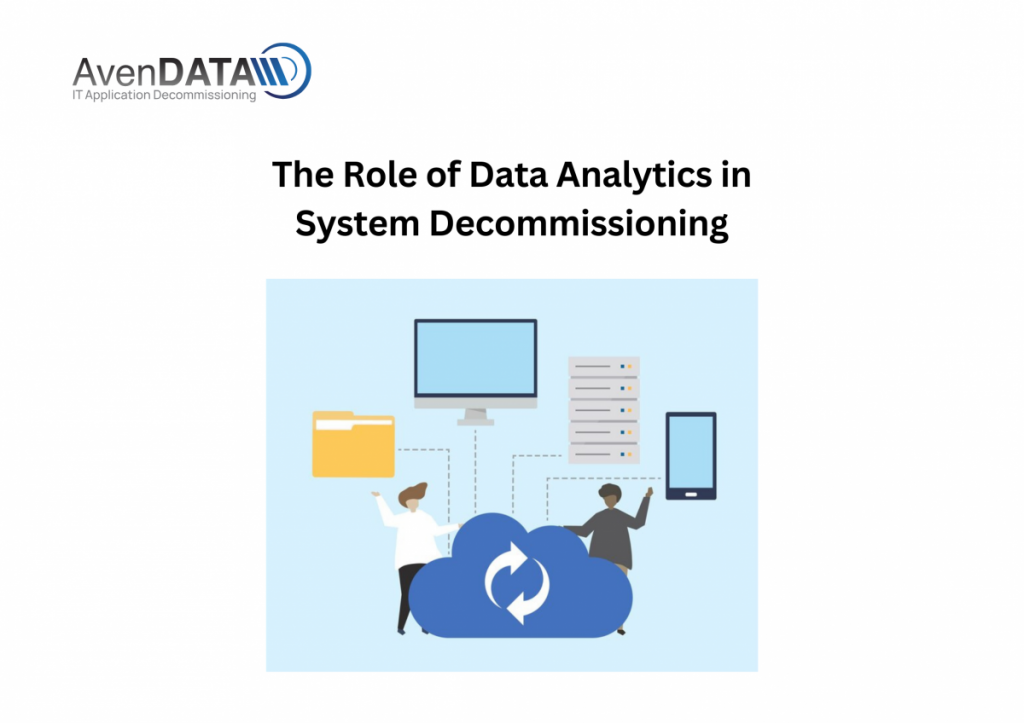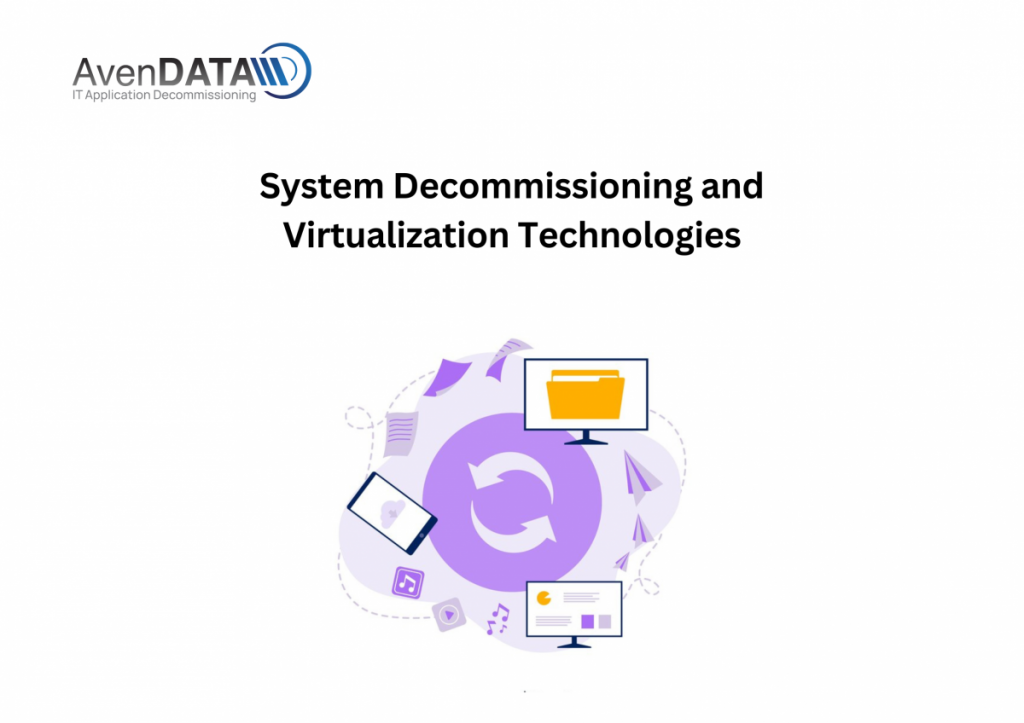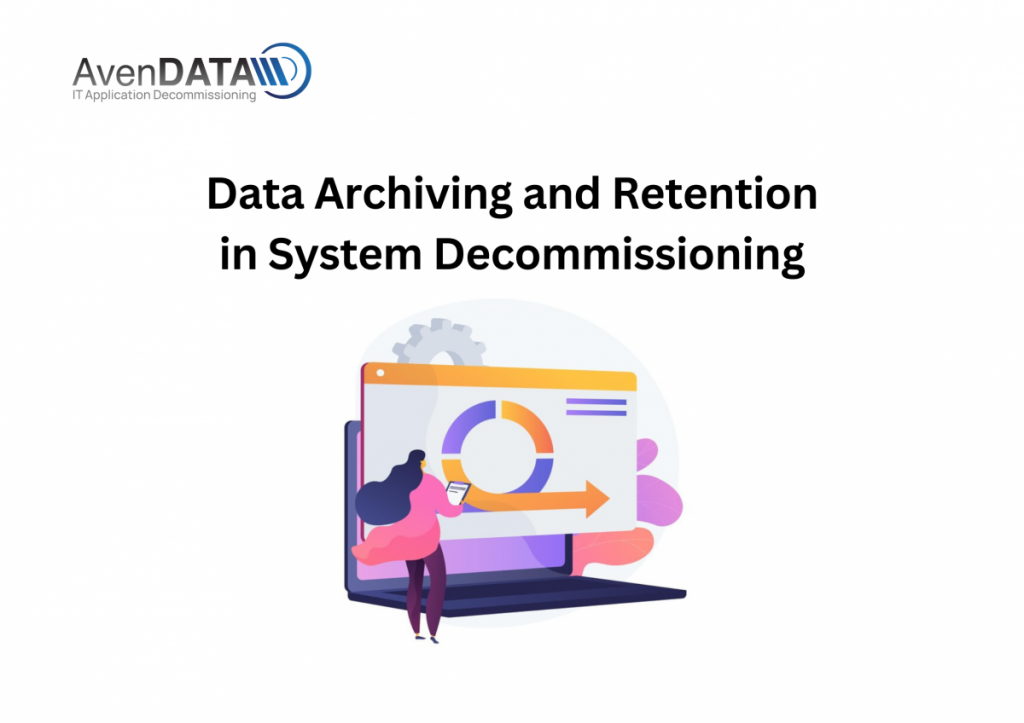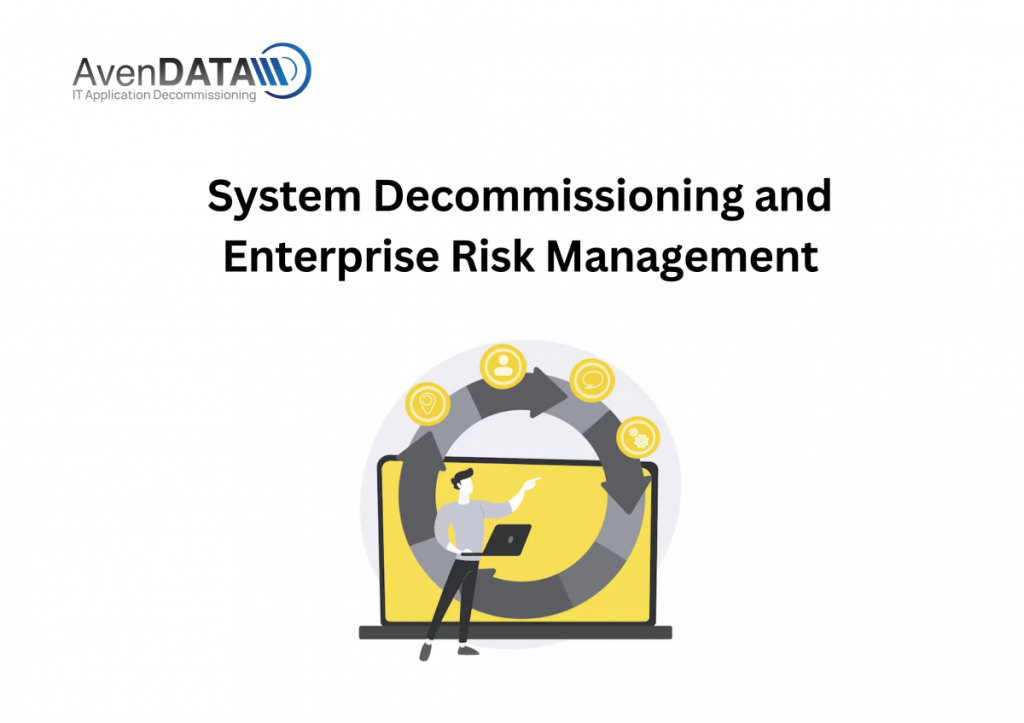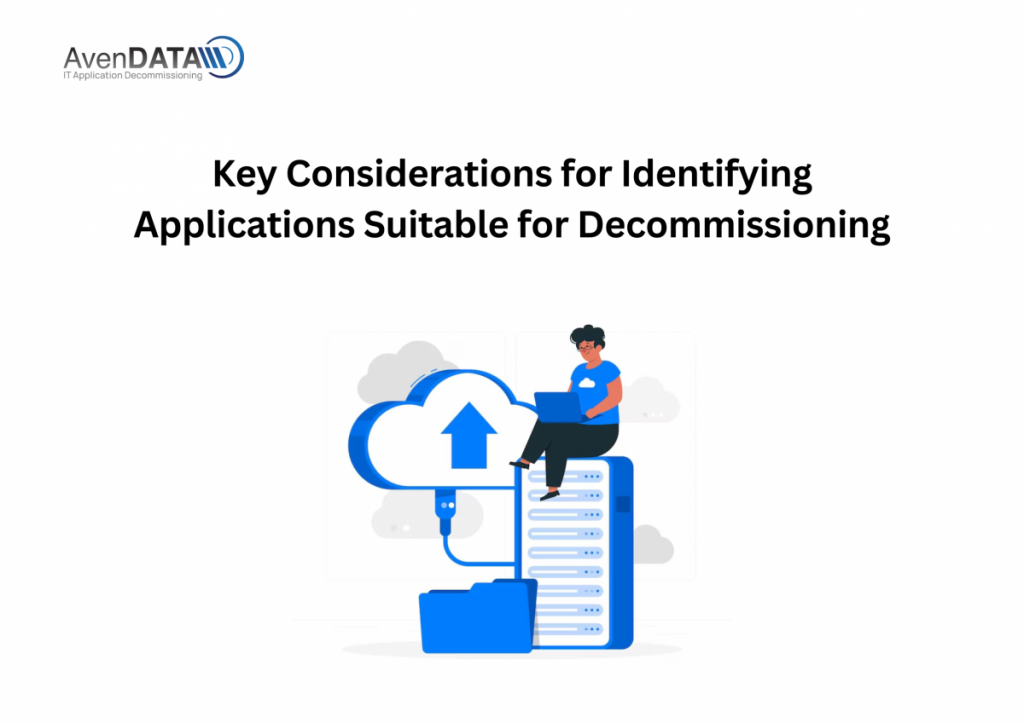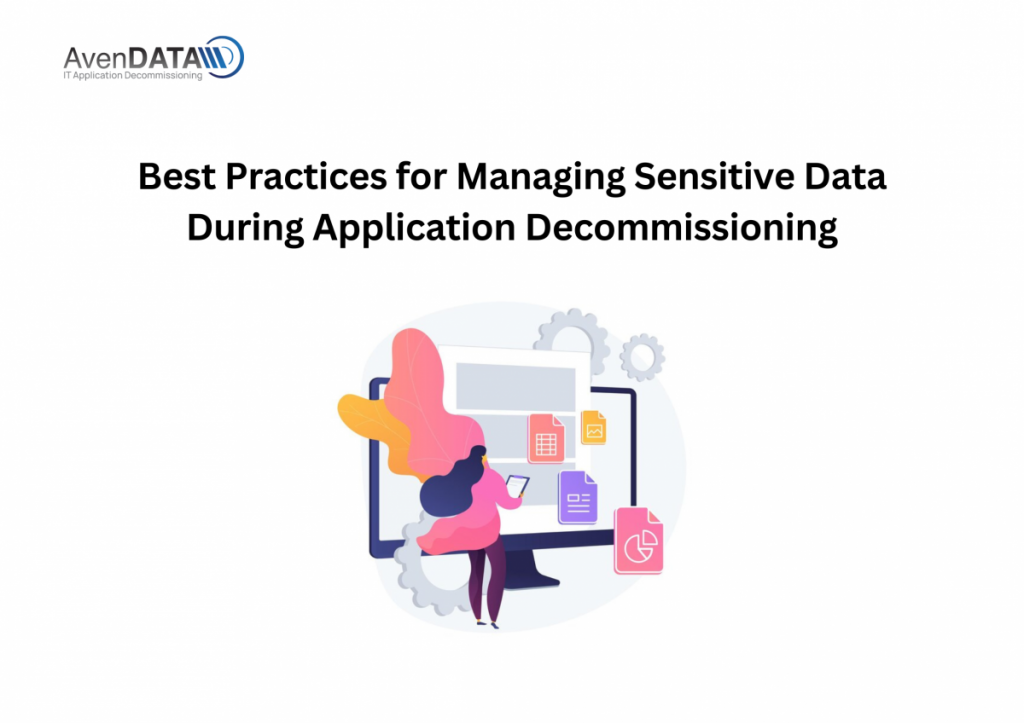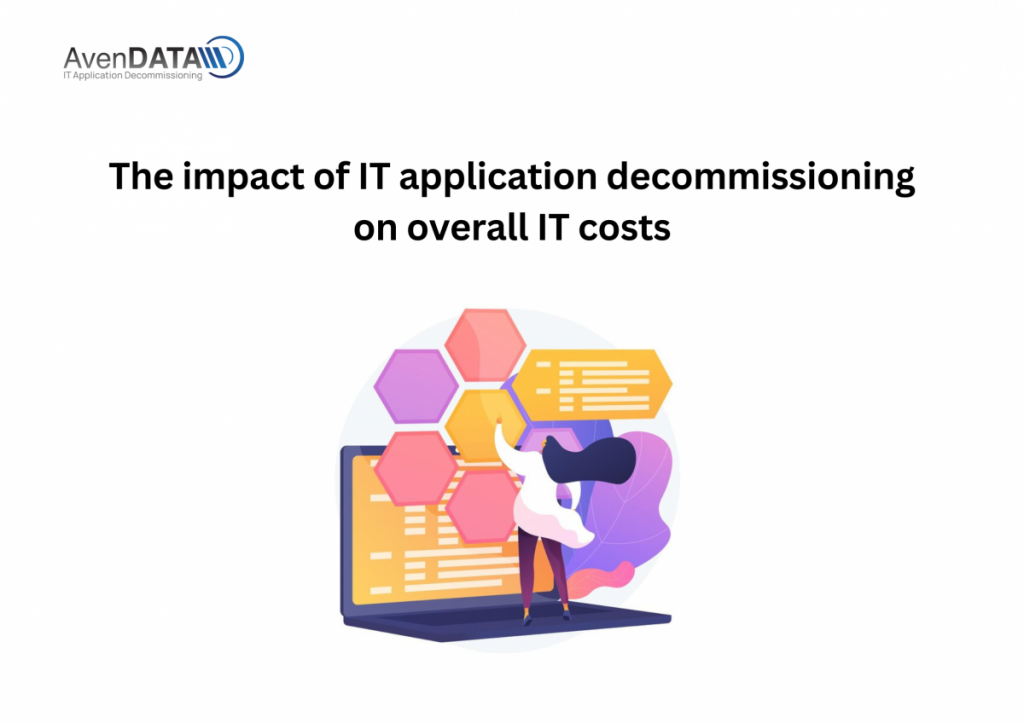Regulatory Compliance in System Decommissioning
Introduction: System decommissioning is a critical process that requires organizations to retire outdated or redundant systems. However, in addition to... View MoreRegulatory Compliance in System Decommissioning
Introduction: System decommissioning is a critical process that requires organizations to retire outdated or redundant systems. However, in addition to managing the technical aspects of decommissioning, organizations must also navigate the complex landscape of regulatory compliance. Compliance with industry regulations and data protection laws is crucial to ensure the security and integrity of sensitive information during the decommissioning process. This blog explores the importance of regulatory compliance in system decommissioning and provides insights on how organizations can effectively manage this aspect of the transition while maintaining data privacy and security.
Understanding Regulatory Compliance in System Decommissioning: Regulatory compliance refers to the adherence to specific laws, regulations, and guidelines set by governing bodies. In the context of system decommissioning, compliance ensures that organizations handle sensitive data appropriately and mitigate any potential risks:
a. Data Privacy Laws: Organizations must comply with data privacy laws such as the General Data Protection Regulation (GDPR), the California Consumer Privacy Act (CCPA), or industry-specific regulations. These regulations impose requirements for the secure handling, storage, and deletion of personal data during system decommissioning.
b. Data Retention Requirements: Certain industries have specific legal requirements for data retention, and organizations must comply with these regulations during the decommissioning process. It is essential to identify and preserve data that must be retained for legal or compliance purposes.
c. Industry-Specific Regulations: Organizations operating in regulated industries, such as healthcare or finance, must comply with industry-specific regulations. These regulations often impose stringent requirements for data security, privacy, and recordkeeping, which must be considered during system decommissioning.
Key Considerations for Regulatory Compliance in System Decommissioning: To ensure regulatory compliance during system decommissioning, organizations should consider the following key aspects:
a. Data Inventory and Classification: Conduct a thorough inventory of data within the systems targeted for decommissioning. Classify the data based on its sensitivity, legal requirements, and retention obligations. This classification helps organizations understand the regulatory implications and develop appropriate strategies for data handling and disposal.
b. Secure Data Destruction: Implement secure data destruction methods to ensure that sensitive information is irretrievable after system decommissioning. This may include physical destruction, secure wiping, or using data erasure software. Document and maintain records of the data destruction process for compliance purposes.
c. Data Transfer and Storage: If data needs to be transferred or stored during the decommissioning process, organizations must ensure that appropriate security measures are in place. This may include encryption, access controls, and secure transmission protocols to safeguard data integrity and confidentiality.
d. Audit Trails and Documentation: Maintain comprehensive audit trails and documentation throughout the decommissioning process. This includes documenting data disposal methods, data transfers, and any actions taken to ensure compliance. These records serve as evidence of compliance and can be invaluable during audits or regulatory inspections.
Collaboration with Legal and Compliance Teams: To effectively manage regulatory compliance in system decommissioning, organizations must collaborate closely with their legal and compliance teams:
a. Legal Expertise: Seek guidance from legal experts who specialize in data protection, privacy laws, and industry-specific regulations. These professionals can provide insights into compliance requirements, help interpret complex regulations, and ensure that the decommissioning process aligns with legal obligations.
b. Compliance Assessments: Conduct compliance assessments to identify any potential gaps or risks related to system decommissioning. These assessments should evaluate the organization’s current practices, policies, and procedures against relevant regulations, helping to identify areas that require attention or improvement.
c. Regular Training and Awareness: Provide regular training and awareness programs to employees involved in the system decommissioning process. This ensures that they are familiar with compliance requirements, understand their responsibilities, and follow best practices to maintain regulatory compliance.
Conclusion: Regulatory compliance is a crucial aspect of system decommissioning, ensuring the security and integrity of sensitive data throughout the transition process. By understanding and adhering to data privacy laws, data retention requirements, and industry-specific regulations, organizations can mitigate risks, maintain data privacy, and protect against potential legal consequences. Conducting a thorough data inventory, implementing secure data destruction methods, collaborating with legal and compliance teams, and maintaining comprehensive documentation are key steps towards achieving regulatory compliance in system decommissioning. Embrace regulatory compliance as an integral part of the process, and navigate the path to a secure and compliant transition.
Know more : https://avendata.com/decommissioning-legacy-systems
#AvenDATA #systemdecommissioning #itdecommissioning #decommissioning #legacydata
Change Management in System Decommissioning
Introduction: System decommissioning is a complex process that requires careful planning, coordination, and effective change management. Successfully navi... View MoreChange Management in System Decommissioning
Introduction: System decommissioning is a complex process that requires careful planning, coordination, and effective change management. Successfully navigating the path of system decommissioning involves addressing the challenges associated with organizational change, stakeholder engagement, and ensuring a smooth transition. In this blog, we explore the importance of change management in system decommissioning and provide insights on how organizations can effectively manage this critical aspect of the transformation journey.
Understanding the Need for Change Management: Change management is essential in system decommissioning as it helps organizations navigate the human aspects of the transition. Recognizing the need for change management ensures a structured approach to address resistance, mitigate risks, and maximize the benefits of decommissioning:
a. Stakeholder Engagement: Change management facilitates effective communication and engagement with stakeholders, ensuring that their concerns and perspectives are addressed. Stakeholders may include end-users, IT teams, management, and external partners or customers impacted by the decommissioning process.
b. Managing Resistance: Change often brings resistance. Change management strategies help identify potential resistance points and develop strategies to address them. By fostering a culture of openness, transparency, and providing clear reasoning for the decommissioning, organizations can reduce resistance and gain buy-in from stakeholders.
c. Risk Mitigation: Effective change management helps organizations identify and mitigate potential risks associated with system decommissioning. By proactively addressing risks such as data loss, disruption to business operations, or security vulnerabilities, organizations can develop contingency plans and mitigate potential negative impacts.
Building a Change Management Plan: A well-structured change management plan is crucial for successful system decommissioning. Consider the following key elements when creating a change management plan:
a. Clear Objectives and Vision: Clearly define the objectives, benefits, and vision of the system decommissioning initiative. This clarity provides a guiding framework for all stakeholders and ensures alignment across the organization.
b. Stakeholder Analysis and Engagement: Identify key stakeholders impacted by the decommissioning process and analyze their needs, concerns, and expectations. Develop tailored communication and engagement strategies to effectively involve and address their perspectives.
c. Communication Strategy: Establish a comprehensive communication strategy that includes regular updates, informative materials, and channels for two-way communication. Communication should be timely, transparent, and focused on addressing stakeholder concerns and keeping them informed throughout the process.
d. Training and Support: Develop training programs and support mechanisms to help stakeholders adapt to new systems, processes, and workflows. Effective training and support empower stakeholders, reduce resistance, and ensure a smooth transition.
e. Change Champions: Identify change champions within the organization who can act as advocates for the decommissioning initiative. These individuals can provide support, address concerns, and serve as role models for embracing the change.
Monitoring and Evaluation: Change management is an ongoing process that requires continuous monitoring and evaluation. Regularly assess the effectiveness of change management strategies and make adjustments as needed:
a. Feedback Mechanisms: Establish feedback mechanisms to gather input from stakeholders throughout the decommissioning process. Actively listen to concerns, suggestions, and feedback, and incorporate them into the change management plan.
b. Key Performance Indicators (KPIs): Define KPIs to measure the success of the change management efforts. These KPIs can be related to stakeholder satisfaction, adoption rates, productivity, or other relevant metrics. Regularly review and analyze these KPIs to assess the impact of change management strategies and make informed adjustments.
c. Continuous Improvement: Embrace a culture of continuous improvement by using insights gained from monitoring and evaluation to refine change management strategies. Learning from past experiences and adjusting the approach based on feedback and lessons learned contributes to the overall success of the system decommissioning initiative.
Conclusion: Change management is a critical component of successful system decommissioning. By actively engaging stakeholders, managing resistance, and addressing potential risks, organizations can navigate the complexities of change, ensuring a smooth transition and maximizing the benefits of system decommissioning. Building a comprehensive change management plan, including clear objectives, stakeholder engagement, effective communication, training and support, and continuous monitoring, enables organizations to effectively manage the human aspects of the transformation process. Embrace change management in system decommissioning and pave the way for a successful and seamless transition towards a more streamlined and efficient IT infrastructure.
Know more : https://avendata.com/decommissioning-legacy-systems
#AvenDATA #systemdecommissioning #itdecommissioning #decommissioning #legacydata
The Role of Data Analytics in System Decommissioning
Introduction: System decommissioning is a critical process that allows organizations to retire outdated or redundant systems, streamline IT infras... View MoreThe Role of Data Analytics in System Decommissioning
Introduction: System decommissioning is a critical process that allows organizations to retire outdated or redundant systems, streamline IT infrastructure, and optimize resources. In this digital age, data analytics plays a crucial role in facilitating effective system decommissioning. By harnessing the power of data analytics, organizations can gain valuable insights, make informed decisions, and ensure a smooth and successful transition. This blog explores the role of data analytics in system decommissioning, highlighting its benefits and best practices for leveraging this transformative approach.
Data Analysis for System Assessment: Data analytics plays a pivotal role in assessing the value and relevance of systems targeted for decommissioning. By analyzing relevant data, organizations can gain insights into system usage, performance, and dependencies, enabling informed decision-making:
a. Usage Patterns: Analyzing usage patterns helps identify systems that are no longer actively used or have become redundant. By understanding the frequency and intensity of system usage, organizations can determine the necessity of maintaining those systems.
b. Performance Evaluation: Data analytics enables organizations to assess the performance of systems targeted for decommissioning. Analyzing metrics such as response times, error rates, and resource utilization provides a comprehensive understanding of system effectiveness and highlights areas for improvement.
c. Dependency Mapping: Data analytics helps organizations identify dependencies between systems, applications, and data. By mapping these dependencies, organizations gain insights into the broader impact of decommissioning a particular system and can plan for smooth transitions or necessary replacements.
Data Cleansing and Migration: During system decommissioning, data analytics plays a crucial role in data cleansing and migration processes, ensuring the integrity and security of valuable information:
a. Data Cleansing: Analyzing data from legacy systems helps identify duplicate, incomplete, or outdated records. Data cleansing ensures that only accurate and relevant data is migrated or retained, reducing the risk of errors and improving data quality in the new system.
b. Data Migration Planning: Data analytics provides insights into the volume, format, and structure of data in legacy systems. This information is instrumental in developing a comprehensive data migration plan, including mapping data fields, ensuring compatibility with the new system, and minimizing data loss or corruption.
c. Data Validation: Data analytics helps validate the accuracy and consistency of migrated data. By comparing data from the legacy system with the migrated data, organizations can identify any discrepancies or errors, ensuring the integrity and reliability of the new system.
Business Insights and Process Optimization: Data analytics not only supports the technical aspects of system decommissioning but also enables organizations to gain valuable business insights and optimize processes:
a. Identifying Efficiency Gaps: Analyzing data from legacy systems provides insights into inefficiencies or bottlenecks in existing processes. This information helps organizations identify opportunities for process optimization, automation, and streamlining, leading to improved operational efficiency.
b. Cost Analysis: Data analytics enables organizations to assess the financial impact of system decommissioning, including cost savings from reduced maintenance, licensing, and infrastructure support. This analysis provides a clear understanding of the return on investment and helps justify the decommissioning decision.
c. Risk Assessment: Data analytics helps organizations assess the potential risks associated with system decommissioning. By analyzing data security, compliance requirements, and potential impacts on business operations, organizations can develop robust risk mitigation strategies and ensure a smooth transition.
Conclusion: Data analytics plays a vital role in system decommissioning, providing organizations with valuable insights to make informed decisions, streamline processes, and optimize resources. By leveraging data analytics, organizations can assess system usage, evaluate performance, map dependencies, cleanse and migrate data, gain business insights, and optimize processes. Successful system decommissioning requires a thorough understanding of the data landscape and a strategic approach to data analytics. Embrace the power of data analytics in system decommissioning, and unlock the full potential of your organization’s digital transformation journey.
Know more : https://avendata.com/decommissioning-legacy-systems
#AvenDATA #systemdecommissioning #itdecommissioning #decommissioning #legacydata
System Decommissioning and Virtualization Technologies
Introduction: As technology evolves rapidly, organizations must adapt to keep pace with the changing IT landscape. System decommissioning and vi... View MoreSystem Decommissioning and Virtualization Technologies
Introduction: As technology evolves rapidly, organizations must adapt to keep pace with the changing IT landscape. System decommissioning and virtualization technologies have emerged as powerful strategies for streamlining IT infrastructure, reducing costs, and improving operational efficiency. This blog explores the benefits and considerations of system decommissioning and virtualization technologies, shedding light on how organizations can harness these approaches to optimize their IT environments.
System Decommissioning: Streamlining IT Infrastructure System decommissioning involves the retirement and removal of outdated or redundant IT systems from the organizational landscape. By eliminating unnecessary systems, organizations can achieve several benefits:
a. Cost Reduction: Decommissioning systems that are no longer in use or have become redundant allows organizations to reduce costs associated with maintenance, licensing, and infrastructure support. This reallocation of resources can be directed towards more strategic initiatives.
b. Simplified Operations: Removing obsolete systems simplifies IT operations, eliminating the need to manage and maintain outdated infrastructure. This streamlining allows IT teams to focus on more critical tasks and reduces the risk of potential security vulnerabilities.
c. Enhanced Security: Decommissioning systems that are no longer actively supported or updated reduces the risk of security breaches. Outdated systems are more vulnerable to attacks as they lack the latest security patches and updates. Removing these systems mitigates potential risks and strengthens overall security posture.
d. Improved Performance: By decommissioning unnecessary systems, organizations can optimize performance by reducing the burden on resources such as storage, processing power, and network bandwidth. This results in improved system performance and better overall user experience.
Virtualization Technologies: Efficient Resource Utilization Virtualization technologies, such as server virtualization and desktop virtualization, enable organizations to optimize resource utilization, improve scalability, and enhance flexibility:
a. Server Virtualization: Server virtualization allows multiple virtual servers to run on a single physical server, effectively consolidating hardware resources. This technology enables organizations to reduce the number of physical servers required, resulting in cost savings, energy efficiency, and simplified management.
b. Desktop Virtualization: Desktop virtualization separates the desktop environment from the physical machine, allowing users to access their desktops remotely. This technology provides flexibility, as users can access their desktops from any device, enhances security by centralizing data storage, and simplifies software deployment and management.
c. Storage Virtualization: Storage virtualization abstracts physical storage resources, allowing for centralized management and increased flexibility. This technology simplifies storage provisioning, improves data availability, and optimizes storage utilization by pooling resources across multiple storage devices.
d. Network Virtualization: Network virtualization abstracts network resources, enabling organizations to create virtual networks that are independent of the physical infrastructure. This technology enhances network agility, simplifies network management, and enables the efficient provisioning of network services.
Considerations and Best Practices: When implementing system decommissioning and virtualization technologies, organizations should consider the following:
a. Comprehensive Planning: Develop a comprehensive plan that includes an inventory of existing systems, a prioritization framework for decommissioning, and a roadmap for virtualization implementation. This planning ensures a systematic and efficient approach to the transformation process.
b. Data Migration and Retention: When decommissioning systems, organizations must carefully plan data migration and retention strategies. Ensure data integrity during the migration process and adhere to legal and compliance requirements for data retention.
c. Performance and Scalability: Assess performance requirements and scalability needs before implementing virtualization technologies. Adequate resource allocation and capacity planning are crucial to ensure optimal performance and accommodate future growth.
d. Security and Compliance: As organizations transition to virtualized environments, security and compliance measures must be a top priority. Implement robust security controls, regularly update software, and adhere to industry regulations to protect data and mitigate risks.
Conclusion: System decommissioning and virtualization technologies offer organizations the opportunity to streamline IT infrastructure, reduce costs, and enhance operational efficiency. By removing redundant systems, organizations can optimize resource utilization, improve security, and simplify IT operations. Virtualization technologies further enhance efficiency by consolidating resources, improving scalability, and providing flexibility. However, careful planning, data migration strategies, performance considerations, and security measures are vital for successful implementation. Embrace the power of system decommissioning and virtualization technologies, and unlock the full potential of your IT infrastructure.
Know more : https://avendata.com/decommissioning-legacy-systems
#AvenDATA #systemdecommissioning #itdecommissioning #decommissioning #legacydata
Impact on End Users in System Decommissioning
System decommissioning is a pivotal phase in the evolution of an organization’s IT infrastructure, often driven by technological advancements, operatio... View MoreImpact on End Users in System Decommissioning
System decommissioning is a pivotal phase in the evolution of an organization’s IT infrastructure, often driven by technological advancements, operational efficiencies, or regulatory requirements. Amidst the strategic considerations and technical complexities of decommissioning, it’s crucial to recognize and address the profound impact on end users. This blog delves into the multifaceted impact on end users in system decommissioning, highlighting the importance of empathy, communication, and support in managing this transformative process.
Disruption to Routine and Workflows
The decommissioning of familiar systems can disrupt end users’ routine workflows, resulting in a period of adjustment and adaptation. As they transition to new platforms or processes, end users may encounter challenges in navigating unfamiliar interfaces, accessing historical data, or performing routine tasks. Acknowledging and mitigating these disruptions through proactive support and training is essential to minimize productivity loss.
Loss of Familiar Tools and Features
End users often develop familiarity with specific tools, features, and functionalities within existing systems. The decommissioning of these systems can result in a perceived loss of familiar tools, leading to apprehension and resistance to change. Organizations must recognize the emotional impact of losing familiar features and proactively address end users’ concerns through effective change management strategies.
Training and Support Needs
The successful adoption of new systems or processes post-decommissioning hinges on comprehensive training and support for end users. Organizations must invest in tailored training programs, user guides, and accessible support channels to empower end users with the knowledge and resources needed to navigate the transition. Proactive support ensures that end users feel confident and capable in the new environment.
Data Accessibility and Transition
The accessibility and transition of data are pivotal concerns for end users during system decommissioning. The seamless transfer of historical data, documents, and records to new systems is essential to ensure continuity of operations. Organizations must prioritize data migration, preservation, and accessibility to alleviate end users’ concerns about data loss or inaccessibility.
Communication and Transparency
Effective communication and transparency are foundational to managing the impact on end users in system decommissioning. Open dialogue about the rationale behind decommissioning, the timeline of transition, and the support available instills confidence and trust among end users. Regular updates, FAQs, and user forums facilitate a culture of transparency and collaboration throughout the decommissioning process.
User Feedback and Engagement
Engaging end users in the decommissioning process through feedback mechanisms and user involvement fosters a sense of ownership and understanding. Organizations can leverage user feedback to address concerns, tailor support resources, and refine the transition process based on end users’ experiences. Empowering end users as active participants in the transition promotes a smoother and more inclusive decommissioning journey.
Empathy and Change Management
Empathy lies at the heart of effective change management in system decommissioning. Recognizing the emotional impact of change on end users and demonstrating empathy in addressing their concerns builds trust and resilience. Organizations that prioritize empathy and user-centric change management are better positioned to navigate the impact on end users with sensitivity and understanding.
In conclusion, the impact on end users in system decommissioning is a multifaceted aspect that demands empathy, proactive support, and effective change management. By acknowledging the disruptions to routine, addressing training and support needs, prioritizing data accessibility, fostering transparent communication, and embracing user feedback, organizations can navigate system decommissioning with a focus on end user experience. Empowering end users through the transition process fosters a culture of adaptability and resilience, ensuring a smoother and more inclusive decommissioning journey.
Know more : https://avendata.com/decommissioning-legacy-systems
#AvenDATA #ITDecommissioning #systemdecommissioning #decommissioning #legacydata
Data Archiving and Retention in System Decommissioning
System decommissioning is a critical phase in the lifecycle of any organization’s IT infrastructure. As systems are retired or replaced, the m... View MoreData Archiving and Retention in System Decommissioning
System decommissioning is a critical phase in the lifecycle of any organization’s IT infrastructure. As systems are retired or replaced, the management of data archiving and retention becomes a paramount concern. This blog delves into the complexities of data archiving and retention in system decommissioning, shedding light on best practices, challenges, and the importance of strategic planning in this crucial phase of IT management.
Understanding Data Archiving and Retention
Data archiving involves the process of moving data from active systems to a separate, long-term storage location for preservation and compliance purposes. On the other hand, data retention pertains to the policies and practices governing the duration for which data must be preserved based on regulatory requirements, business needs, and historical significance.
Challenges in System Decommissioning
System decommissioning presents unique challenges when it comes to data archiving and retention. Organizations must navigate through vast amounts of legacy data, diverse data formats, and varying retention requirements. Additionally, ensuring the accessibility, integrity, and security of archived data poses significant logistical and regulatory challenges.
Compliance and Regulatory Considerations
Regulatory compliance is a crucial aspect of data archiving and retention in system decommissioning. Organizations must adhere to industry-specific regulations and data privacy laws, such as GDPR, HIPAA, and SOX, to avoid potential legal repercussions. Compliance requirements directly impact the duration and methods of data retention, necessitating meticulous planning and execution.
Risk Management and Data Security
Effective data archiving and retention strategies in system decommissioning must prioritize risk management and data security. Safeguarding archived data from unauthorized access, data breaches, and corruption is paramount. Encryption, access controls, and regular data integrity checks are essential components of a robust data security framework.
Legacy Data Migration and Accessibility
Legacy data migration is a critical aspect of system decommissioning, requiring seamless transfer of archived data to modern storage systems or platforms. Ensuring the accessibility and usability of archived data, especially as technology evolves, is a fundamental consideration. Compatibility with future systems and applications is essential to prevent data obsolescence.
Long-Term Preservation and Retrieval
The long-term preservation of archived data is a strategic imperative in system decommissioning. Organizations must establish protocols for periodic data verification, migration, and retrieval to ensure the integrity and authenticity of archived data over time. Implementing comprehensive data lifecycle management practices is crucial for sustained data preservation.
Strategic Planning and Governance
Strategic planning and governance are foundational to successful data archiving and retention in system decommissioning. Organizations must develop clear policies, procedures, and governance frameworks to guide the entire process. Effective stakeholder communication, risk assessments, and collaboration between IT, legal, and compliance teams are essential for cohesive execution.
In conclusion, data archiving and retention in system decommissioning are multifaceted endeavors that demand meticulous planning, adherence to compliance requirements, and a proactive approach to data management. By prioritizing compliance, risk management, accessibility, and long-term preservation, organizations can navigate the complexities of system decommissioning with confidence, ensuring the seamless transition of archived data while mitigating potential risks and legal implications.
Know more : https://avendata.com/decommissioning-legacy-systems
#AvenDATA #ITDecommissioning #systemdecommissioning #decommissioning #legacydata
System Decommissioning and Enterprise Risk Management
Introduction: The process of system decommissioning represents a critical juncture in an organization’s lifecycle, where legacy systems, applic... View MoreSystem Decommissioning and Enterprise Risk Management
Introduction: The process of system decommissioning represents a critical juncture in an organization’s lifecycle, where legacy systems, applications, and infrastructure are retired to pave the way for modernization and operational efficiency. In the context of enterprise risk management, system decommissioning presents unique challenges and opportunities that necessitate a strategic approach to mitigate risks, safeguard data integrity, and maximize the value of the decommissioning process. This blog aims to explore the intersection of system decommissioning and enterprise risk management, shedding light on best practices, risk mitigation strategies, and the proactive management of decommissioning complexities to foster a resilient, future-ready organizational landscape.
Understanding the Risks of System Decommissioning: System decommissioning introduces a spectrum of risks that encompass data security vulnerabilities, operational disruptions, regulatory non-compliance, and the potential loss of critical information. Legacy systems, if not decommissioned with meticulous care, can pose inherent risks related to data exposure, system vulnerabilities, and the interruption of business-critical processes. The convergence of these risks underscores the imperative for organizations to navigate system decommissioning within the framework of enterprise risk management, where proactive measures are essential to safeguard against potential threats and liabilities.
Mitigating Risks Through Comprehensive Planning: Effective enterprise risk management in the context of system decommissioning begins with comprehensive planning that encompasses risk identification, impact assessment, and the formulation of risk mitigation strategies. Organizations must conduct thorough risk assessments to identify potential vulnerabilities, data exposure points, and operational dependencies associated with the legacy systems targeted for decommissioning. By understanding the scope and magnitude of decommissioning risks, organizations can develop proactive risk mitigation plans that align with enterprise risk management frameworks and regulatory requirements, ensuring a methodical approach to minimizing potential liabilities.
Data Security and Compliance Considerations: Central to the risk management framework for system decommissioning is the prioritization of data security and compliance considerations throughout the decommissioning process. Organizations must implement robust data security protocols, encryption standards, and secure data migration practices to safeguard sensitive information during and after the decommissioning of legacy systems. Additionally, adherence to regulatory compliance requirements, such as data retention policies, privacy regulations, and industry-specific mandates, is integral to mitigating compliance risks that may arise from system decommissioning activities. By integrating data security and compliance considerations into the risk management framework, organizations uphold the integrity of sensitive data and fortify their regulatory posture in the face of decommissioning challenges.
Operational Continuity and Contingency Planning: The seamless transition from legacy systems to modernized environments is a pivotal facet of enterprise risk management in system decommissioning. Organizations must prioritize operational continuity and contingency planning to mitigate the risks of disruptions, downtime, and productivity loss during the decommissioning process. This entails the development of robust contingency plans, failover mechanisms, and phased decommissioning strategies that minimize the impact on essential business functions. By proactively addressing operational continuity and contingency planning, organizations uphold their resilience in the face of decommissioning-related operational risks and ensure uninterrupted service delivery to stakeholders and customers.
Change Management and Stakeholder Engagement: The human element of system decommissioning necessitates a focus on change management and stakeholder engagement as integral components of enterprise risk management. Organizations must foster a culture of awareness, training, and collaboration to mitigate the risks associated with workforce resistance, skill gaps, and operational disruptions stemming from system decommissioning. Effective change management strategies, coupled with robust stakeholder engagement initiatives, empower employees to adapt to the changes brought about by decommissioning, minimize resistance, and drive organizational readiness for the transition to modernized systems. By prioritizing change management and stakeholder engagement, organizations mitigate the human-centric risks inherent in system decommissioning and cultivate a supportive environment for successful transformation.
Risk Monitoring, Evaluation, and Continuous Improvement: Enterprise risk management in the context of system decommissioning extends beyond the planning and execution phases to encompass ongoing risk monitoring, evaluation, and continuous improvement. Organizations must establish key performance indicators (KPIs) related to decommissioning risks, data security metrics, and operational resilience benchmarks to enable real-time risk assessment and proactive intervention. Regular evaluation of risk management strategies, coupled with a commitment to continuous improvement, empowers organizations to adapt to evolving decommissioning challenges, refine risk mitigation approaches, and elevate their enterprise risk management posture in the context of system decommissioning.
Conclusion: System decommissioning, when approached within the framework of enterprise risk management, demands a strategic, proactive, and holistic approach to mitigate risks, safeguard data integrity, and optimize the value of the decommissioning process. By prioritizing comprehensive planning, data security and compliance considerations, operational continuity, change management, stakeholder engagement, and continuous risk monitoring, organizations can navigate the complexities of system decommissioning with resilience, agility, and a commitment to maximizing the benefits of modernization.
Know more : https://avendata.com/decommissioning-legacy-systems
#AvenDATA #ITDecommissioning #systemdecommissioning #decommissioning #legacydata
Key Considerations for Identifying Applications Suitable for Decommissioning
Introduction: In today’s rapidly evolving technological landscape, organizations must regularly assess their application... View MoreKey Considerations for Identifying Applications Suitable for Decommissioning
Introduction: In today’s rapidly evolving technological landscape, organizations must regularly assess their application portfolios to identify outdated or redundant applications that are no longer serving their intended purpose. IT Application decommissioning offers a strategic approach to streamline IT operations, reduce costs, and improve overall efficiency. However, identifying which applications are suitable for decommissioning requires careful consideration. In this blog, we will explore key considerations for identifying applications suitable for decommissioning, helping organizations make informed decisions and maximize the benefits of the decommissioning process.
Business Value and Relevance: Assess the business value and relevance of each application within the organization. Evaluate whether the application aligns with current business objectives, processes, and strategic initiatives. Applications that no longer contribute to business goals or have become redundant due to technological advancements are strong candidates for decommissioning.
User Adoption and Engagement: Consider the level of user adoption and engagement with the application. If an application is underutilized or has a low user base, it may indicate that it no longer meets user needs or has been replaced by more efficient alternatives. Engage with users to gather feedback on their satisfaction, pain points, and suggestions for improvement to inform the decommissioning decision.
Technical Compatibility and Integration: Evaluate the technical compatibility and integration of the application with existing systems and infrastructure. Applications that are difficult to integrate, require excessive maintenance or customization, or pose compatibility challenges may hinder operational efficiency. Decommissioning such applications can streamline IT operations and reduce maintenance costs.
Data Management and Dependencies: Assess the data management aspects of the application. Consider the volume, quality, and sensitivity of the data associated with the application. Applications with outdated or redundant data that can be migrated or retired without impacting critical business processes are suitable candidates for decommissioning. Identify any dependencies on the application for other systems or processes to ensure a smooth transition.
Regulatory and Compliance Requirements: Consider the application’s compliance with industry regulations and data protection requirements. Applications that do not meet regulatory standards or pose risks to data privacy may need to be decommissioned to mitigate legal and compliance risks. Ensure proper data archiving and disposal processes are in place to meet regulatory obligations.
Total Cost of Ownership (TCO): Evaluate the total cost of ownership (TCO) of the application, considering licensing fees, maintenance costs, support contracts, infrastructure requirements, and associated resources. Applications with high TCO and low return on investment are good candidates for decommissioning, as retiring them can lead to significant cost savings and resource optimization.
Risk and Security: Assess the risk and security implications associated with the application. Applications that are vulnerable to security breaches, lack adequate support, or have a history of security incidents may pose significant risks to the organization. Decommissioning such applications mitigates security vulnerabilities and reduces potential risks.
Future Scalability and Innovation: Consider the application’s scalability and ability to support future growth and innovation. Applications that lack scalability or cannot adapt to evolving business needs hinder organizational agility. By decommissioning such applications, organizations can free up resources and invest in more innovative and scalable solutions.
Stakeholder Engagement and Communication: Involve key stakeholders, including business users, IT teams, and executive management, in the decision-making process. Gather insights, address concerns, and communicate the rationale behind the decommissioning decision. Stakeholder buy-in and collaboration are crucial for successful application decommissioning.
Conclusion: Identifying applications suitable for decommissioning requires a comprehensive evaluation of factors such as business value, user adoption, technical compatibility, data management, compliance, TCO, risk and security, future scalability, and stakeholder engagement. By carefully considering these key factors, organizations can make informed decisions, streamline their application portfolios, reduce costs, improve operational efficiency, and pave the way for innovation. Application decommissioning, when done strategically, enables organizations to optimize their IT landscapes and focus resources on systems that drive business growth and success.
Know more : https://avendata.com/application-decommissioning
#AvenDATA #ITdecommissioning #datadecomissioning #applicationdecommissioning #dataarchiving #applicationretirement
Best Practices for Managing Sensitive Data During Application Decommissioning
Introduction: During the process of application decommissioning, effectively managing sensitive data is crucial to mainta... View MoreBest Practices for Managing Sensitive Data During Application Decommissioning
Introduction: During the process of application decommissioning, effectively managing sensitive data is crucial to maintain data privacy, security, and compliance. Mishandling or unauthorized access to sensitive data can lead to severe consequences, including legal and reputational risks. In this blog, we will explore best practices for managing sensitive data during application decommissioning, providing organizations with guidelines to ensure data protection and minimize potential risks.
Identify and Classify Sensitive Data: Before decommissioning an application, it is essential to identify and classify sensitive data within the application. This includes personally identifiable information (PII), financial records, intellectual property, or any other data subject to privacy regulations. By understanding the types of sensitive data involved, organizations can develop appropriate strategies for protecting and managing this information.
Implement Data Masking and Anonymization: To maintain data privacy during IT application decommissioning, consider implementing data masking or anonymization techniques. Data masking replaces sensitive data with fictional or scrambled values, while anonymization removes or alters identifying information. These techniques allow organizations to retain meaningful data for testing or historical purposes while mitigating privacy risks.
Conduct Data Inventory and Mapping: Perform a comprehensive data inventory and mapping exercise to identify where sensitive data resides within the application. This includes databases, file systems, backups, and any other storage locations. By understanding the data’s location and flow, organizations can better assess the potential risks and plan appropriate security measures during decommissioning.
Develop a Data Retention and Disposal Plan: Create a clear data retention and disposal plan that outlines how sensitive data will be managed during the decommissioning process. This plan should include timelines for data retention, legal requirements, and secure disposal methods. Ensure that data retention and disposal practices are aligned with relevant regulatory frameworks, industry standards, and internal policies.
Secure Data Transfer and Storage: When migrating or transferring sensitive data during application decommissioning, prioritize secure methods such as encrypted connections or secure file transfer protocols. Ensure that data is encrypted during transit and stored in secure locations, protected by access controls, firewalls, and intrusion detection systems. Limit access to authorized personnel only.
Conduct Thorough Data Cleansing: Before decommissioning an application, conduct thorough data cleansing to remove any unnecessary or redundant sensitive data. This process helps minimize data volumes, reduce risks, and ensure compliance with data protection regulations. Implement data quality checks and validation processes to ensure data accuracy and integrity.
Maintain Audit Trails and Logs: Implement robust logging and auditing mechanisms to monitor and record activities related to sensitive data during application decommissioning. This includes tracking data access, modifications, transfers, and disposal. Audit trails and logs serve as important evidence for compliance purposes, incident investigations, and accountability.
Regularly Test and Validate Security Measures: Regularly test and validate the effectiveness of security measures implemented to protect sensitive data during application decommissioning. This includes conducting vulnerability assessments, penetration testing, and security audits to identify potential weaknesses. Mitigate any identified risks promptly to ensure data integrity and minimize security vulnerabilities.
Involve Data Protection Officers (DPOs) and Legal Experts: Engage data protection officers (DPOs) and legal experts to provide guidance on data privacy regulations, compliance requirements, and best practices. Their expertise can help ensure that sensitive data is managed in accordance with legal obligations, industry standards, and privacy frameworks.
Provide Employee Training and Awareness: Educate employees about the importance of managing sensitive data during application decommissioning. Offer training programs to raise awareness of data privacy risks, security protocols, and best practices. Encourage employees to report potential data breaches or vulnerabilities promptly.
Conclusion: Managing sensitive data during application decommissioning is critical for organizations to protect data privacy, ensure compliance, and mitigate risks. By following best practices such as identifying and classifying sensitive data, implementing data masking and anonymization, conducting data inventory and mapping, developing a data retention and disposal plan, securing data transfer and storage, conducting thorough data cleansing, maintaining audit trails and logs, testing security measures, involving DPOs and legal experts, and providing employee training, organizations can effectively manage sensitive data throughout the decommissioning process. By prioritizing data privacy and security, organizations can safeguard sensitive information, maintain compliance with regulatory requirements, and protect their reputation in an increasingly data-driven world.
Know more : https://avendata.com/application-decommissioning
#AvenDATA #ITdecommissioning #datadecomissioning #applicationdecommissioning #dataarchiving #applicationretirement
The impact of IT application decommissioning on overall IT costs
Introduction: As organizations strive to optimize their IT infrastructure, one crucial aspect often overlooked is the cost associated ... View MoreThe impact of IT application decommissioning on overall IT costs
Introduction: As organizations strive to optimize their IT infrastructure, one crucial aspect often overlooked is the cost associated with maintaining outdated or redundant applications. IT application decommissioning, the process of retiring such applications, can have a significant impact on overall IT costs. By eliminating unnecessary expenses and streamlining operations, organizations can achieve substantial cost savings while improving efficiency. In this blog, we will explore the impact of IT application decommissioning on overall IT costs, highlighting the benefits, challenges, and strategies for successful implementation.
Reducing Licensing and Maintenance Costs: One of the most immediate cost benefits of IT application decommissioning is the elimination of licensing and maintenance fees associated with outdated applications. By retiring these applications, organizations can avoid ongoing costs related to software licenses, support contracts, and maintenance fees. This reduction in expenditure can free up resources that can be redirected towards more strategic initiatives or invested in new technologies.
Minimizing Infrastructure and Hardware Expenses: Outdated applications often require dedicated hardware and infrastructure to operate effectively. These legacy systems can be costly to maintain, upgrade, and secure. Through decommissioning, organizations can retire the hardware and infrastructure associated with these applications, leading to reduced costs in maintenance, power consumption, cooling, and physical space requirements. By optimizing their IT infrastructure, organizations can achieve significant cost savings in the long run.
Streamlining IT Operations: Maintaining and supporting multiple applications can lead to complexity and inefficiency within IT operations. Decommissioning applications allows organizations to streamline their IT landscape, reducing the complexity of managing various systems. This simplification can lead to cost savings by optimizing resource allocation, reducing the need for specialized skills, and improving overall operational efficiency.
Enhancing Data Storage Optimization: Outdated applications often occupy valuable storage space, leading to increased costs associated with data storage and backup. Decommissioning these applications enables organizations to reclaim storage resources, leading to reduced costs in data storage infrastructure, backup systems, and data management. By optimizing data storage, organizations can achieve cost savings while improving overall data governance and accessibility.
Mitigating Security Risks and Compliance Costs: Outdated applications pose security risks, as they may no longer receive regular security updates and patches. Decommissioning these applications reduces the risk of data breaches and associated costs of remediation. Additionally, retiring applications that no longer comply with regulatory requirements can reduce compliance costs, such as audit expenses and potential penalties. By decommissioning outdated applications, organizations can proactively mitigate security risks and achieve compliance while reducing associated costs.
Challenges and Strategies for Successful Decommissioning: IT application decommissioning is not without its challenges. It requires careful planning, stakeholder management, and data migration to ensure a seamless transition. Organizations should develop a comprehensive decommissioning strategy that includes identifying applications suitable for retirement, assessing the impact on business processes, and managing data migration and archival. By leveraging project management methodologies, engaging key stakeholders, and conducting thorough impact assessments, organizations can mitigate risks and ensure successful decommissioning while optimizing IT costs.
Conclusion: IT application decommissioning has a direct and significant impact on overall IT costs. By retiring outdated or redundant applications, organizations can reduce licensing and maintenance costs, minimize infrastructure expenses, streamline IT operations, optimize data storage, and mitigate security risks and compliance costs. The key to successful decommissioning lies in careful planning, stakeholder engagement, and strategic execution. As organizations optimize their IT landscape through decommissioning, they can achieve substantial cost savings, improve operational efficiency, and free up resources to invest in more strategic initiatives. By embracing IT application decommissioning as part of their IT optimization strategy, organizations can drive long-term cost savings and position themselves for future growth and innovation.
Know more : https://avendata.com/application-decommissioning
#AvenDATA #ITdecommissioning #datadecomissioning #applicationdecommissioning #dataarchiving #applicationretirement
page=1&year=&month=&hashtagsearch=ITdecommissioning
Load More

